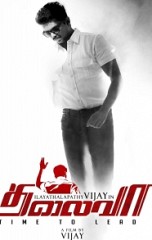PHOTOS & STILLS - GALLERY

THE SOUND OF PIZZA 2 AND THALAIVAA!
“There is no question at this time but that interest in the movies has quickened immeasurably with the coming of sound and that it doubles their possibilities. This has been the most interesting year in the cinema since that momentous time when The Great Train Robbery startled the world,” read one of the initial reports authored by John S Cohen in late 1920s. He also rightly called it ‘the end of silence’. In 1927, after decades of hush-hush, films started talking for the first time.
But, let’s talk Desi. It approximately took 1,329 silent films for India to make its first talkie film. While The Jazz Singer was released in 1927, the first Indian talkie, Alam Ara released four years later, in 1931.
Madan Theaters played a major part in introducing talkie techs in India. Being in possession of a lion’s share of box offices in the country, the company arranged special shows of number of international talkies like Melody of Love, Show Boat and many others. These films enlivened the Indian film makers to adapt to the new technology. Madan Theatres then went on to produce a number of popular and landmark films until 1937.
Since then, sound in films has been one of innovators’ pets. Monos and stereos transformed into various surround technologies. Karuppu Roja (Tamil) introduced DTS to Indian Cinema, Chimni Pakhara (Marathi) brought Dolby and Vishwaroopam familiarized Auro 3D.
“People have actually started noticing the differences in sound nowadays. In fact, I have got myself some fans, who would call me and appreciate me for my works. Isn’t that awesome,” says a proud Raja Krishnan, a leading Audiographer, who is currently working on Vijay’s Thalaivaa. He was the one who actually introduced 7.1 surround sound to Tamil Cinema. He did that with Karthik Subbaraj’s Pizza and it really paid off.
Now he is all set to exploit the recent sensation, Dolby Atmos in Thalaivaa. “We are, kind of experimenting the technology in the film (Thalaivaa). But, I’m sure that this facility (Atmos), which is more of a luxury now in our country, will become a necessity in the near future” says the audiographer, probably looking at Satyam’s announcement of installing Atmos infrastructure in 37 theaters of theirs. Dolby Atmos is an advanced 64 channel sound technology that was first used in Sivaji 3D (in India).
“But the Sound (in Sivaji 3D) was ‘converted’ and not created. We are now creating audio in Dolby Atmos. It’s called ‘native Dolby mix’,” Illustrate Vishnu Govind and Sree Sankar, the young sound designers who have been a part of the celebrated gen-next films like Pizza and Neram. They are presently working on Pizza 2- The Villa and are of course using Dolby Atmos. The duo is enthusiastic and proud of being one of those ‘first ones in the country’ to use the technology.
“We are actually in middle of a massive revolution and it excites us big time to even contribute to this evolution”, gushes Vishnu and to which Raja Krishnan agrees too. “People can actually feel as if they are a part of the film. The precision of movement that Atmos delivers is so genuine that it can deceive you to believe that all the other senses other than the hearing, of course, have actually gone numb,” laughs Vishnu.
But it is not as easy as it sounds. On an average, it takes 30 to 40 days of toiling for the sound specialists to finish one film. It involves meticulous planning, extreme patience and immense research work to finish the job in a given time. Vishnu boasts, “We actually wrote a sound script for Pizza, which by the way we think nobody has done before.”
But all for what? One serious twinge Raja Krishnan, Vishnu, Sree and most of the sound techies I would say, share is the recognition that’s absolutely absent. There are innumerous awards for actors, directors, producers, cinematographers, editors, musicians and even art directors (with all due respects). But there aren’t many for the sound designers and engineers.
“I have in fact stopped wondering about awards. Sometime we aren’t even given the deserved respect in these fancy award functions,” Raja Krishnan shares his agony, but with a polite smile. “To me the awards that really mean are National and State awards. They are probably the ones that really recognize our works,” he adds.
On the other hand Vishnu and Sree, who by the way second Raja Krishnan, are confident that this is indeed changing. With common people now aware of terms like Auro 3D (thanks to Kamal Haasan) and Dolby Atmos, big awards are sure to come by.
After all, one of those very few Indians who won the Oscars is a sound designer. The bias must cease to exist and all the fancy, sexy awards must stop aiming to flatter just the people with star power and honour every creative individual.
It’s high time to cheer those incredibly creative and patient technicians, who provide a voice to cinema! So let’s hear some ‘hear, hear’!
Behindwoods is not responsible for the views of columnists.
FACEBOOK COMMENTS
OTHER LATEST COLUMNS
SUDHARSHAN'S OTHER COLUMNS
RELATED LINKS
- The very best of Tamil cinema, 2013 - A comprehensive analysis
- My favourite films
- 2014: Kollywood beyond Box-office expectation
- Top 25 Movies 2013
- 2. Vishwaroopam | TOP 5 MOVIES AT CHENNAI BOX OFFICE IN 2013 - Slideshow
- 1.Vishwaroopam | TOP 25 MOVIES OF 2013 - Slideshow
- Kamal thanks for vishwaroopam support
- The Need For Commercial Films
- 7. Pizza | TOP 10 Posters of the decade so far - Slideshow
- The common link between Thalaivaa & Chennai Express
- Was DTH an option for Vijay & Vijay ?
- Will he or won't he - Vijay and the guessing game
- Thalaiva | Its all about Thalaivaa - Top 10 News - Slideshow
- Thalaivaa - the hit elements that worked
- Thalaiva Movie Review by Common Man











